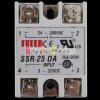Mikecr
Well-Known Member
Plenty of videos here: https://www.youtube.com/results?search_query=lee+pot+pid+contoller
 Help Support Long Range Hunting Forum
Help Support Long Range Hunting Forum
First 100 cases of 300wm are done. I've selected a few for your review and input, thoughts?
500deg C for 5-6 secs.

 if you order a pid just make sure you get one from the states so the instructions will be in english lol sjots 5,6,9,10,11,12 are empty, you could use the alt slots for a temp alarm if you wanted to and set those values in the setup on the pid
if you order a pid just make sure you get one from the states so the instructions will be in english lol sjots 5,6,9,10,11,12 are empty, you could use the alt slots for a temp alarm if you wanted to and set those values in the setup on the pidI like the guitar in the vid!Plenty of videos here: https://www.youtube.com/results?search_query=lee+pot+pid+contoller
I didn't really like how much salt is left inside and outside of the case
I found mine to have residual salt inside.i didnt have much drag out on my cases, when I pulled them out of the water they are pretty clean, this is one right out of the water and air blown dry.
View attachment 132446
how hot are you running your salt? I ran mine at 932FI found mine to have residual salt inside.
thats is how I have been doing it alsoI do a quench immediately after the brass comes out of the salt. This helps keep my anneal consistent and wash the salt off the cases. After the cases are dry then I tumble them with corn cob.
Look up heat treat oven DIY on you tube. Most of us knife makers have made our own heat treat ovens all using various pid controllers.Is it to much to ask to put together a step by step tutorial for PID, specific to which part goes where and how is it wired?